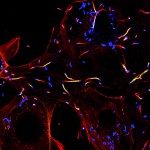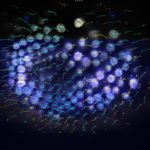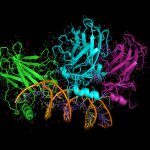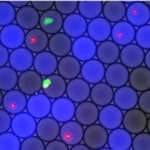Lien vers Pubmed [PMID] – 29478905
Lien DOI – S2451-9456(18)30036-910.1016/j.chembiol.2018.01.014
Cell Chem Biol 2018 04; 25(4): 483-493.e9
Neutrophils represent the most abundant immune cells recruited to inflamed tissues. A lack of dedicated tools has hampered their detection and study. We show that a synthesized peptide, MUB40, binds to lactoferrin, the most abundant protein stored in neutrophil-specific and tertiary granules. Lactoferrin is specifically produced by neutrophils among other leukocytes, making MUB40 a specific neutrophil marker. Naive mammalian neutrophils (human, guinea pig, mouse, rabbit) were labeled by fluorescent MUB40 conjugates (-Cy5, Dylight405). A peptidase-resistant retro-inverso MUB40 (RI-MUB40) was synthesized and its lactoferrin-binding property validated. Neutrophil lactoferrin secretion during in vitro Shigella infection was assessed with RI-MUB40-Cy5 using live cell microscopy. Systemically administered RI-MUB40-Cy5 accumulated at sites of inflammation in a mouse arthritis inflammation model in vivo and showed usefulness as a potential tool for inflammation detection using non-invasive imaging. Improving neutrophil detection with the universal and specific MUB40 marker will aid the study of broad ranges of inflammatory diseases.











